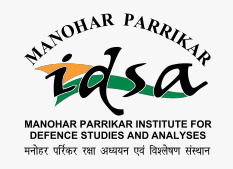UN Peacekeeping in Democratic Republic of the Congo, 2003–2010
- July-September 2022 |
- Journal of Defence Studies
Volume:16
Issue: 3
Focus
Air power has played a critical role in counter-insurgency and irregular warfare across the world. India’s own rich experience is full of documented
roles of air power in such campaigns. This article documents the unique experience of Indian air power in ‘robust’ peacekeeping under the
United Nations (UN) flag in Democratic Republic of the Congo in 2003–2010. A modelling is attempted to understand doctrinal and conceptual issues of this experience. Lessons are gleaned to improve air power’s effectiveness in such less-than-war situations. This is an imperative in light of the increasing importance of protection of civilians during conflicts.
| Attachment |
|---|
 Download Complete [PDF] Download Complete [PDF] |
Posted On: July 21, 2022
Keywords: Air Power, UN Peacekeeping




